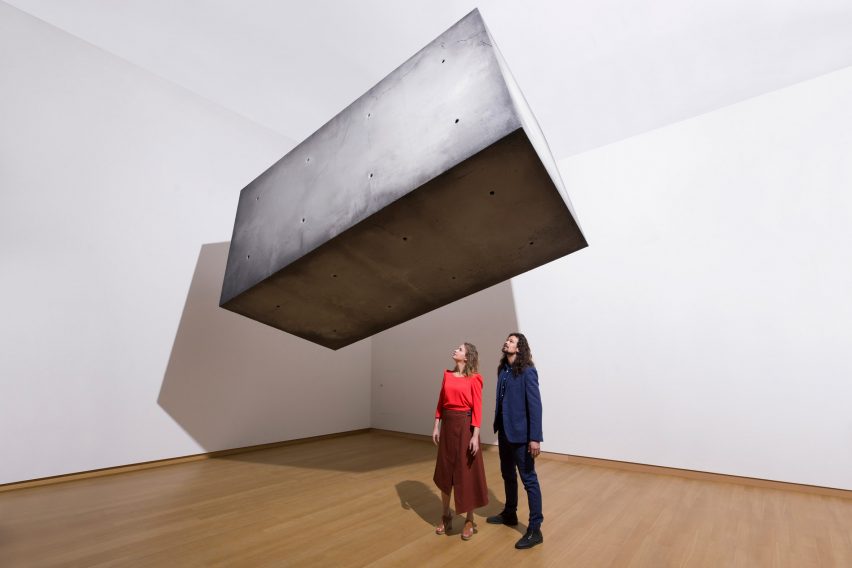
Studio Drift hopes to inspire "a positive version of the future" with first major retrospective
Studio Drift wants to show how the improbable can be made possible with its first major exhibition, at the Stedelijk Museum Amsterdam, which features a floating concrete monolith and a light sculpture made from dandelions.
Coded Nature features an array of unusual installations and objects, from chandeliers that dance, to chairs containing ghostly skeletons.
"Science fiction is one of the big inspirations in our work," explained studio founders Lonneke Gordijn and Ralph Nauta.
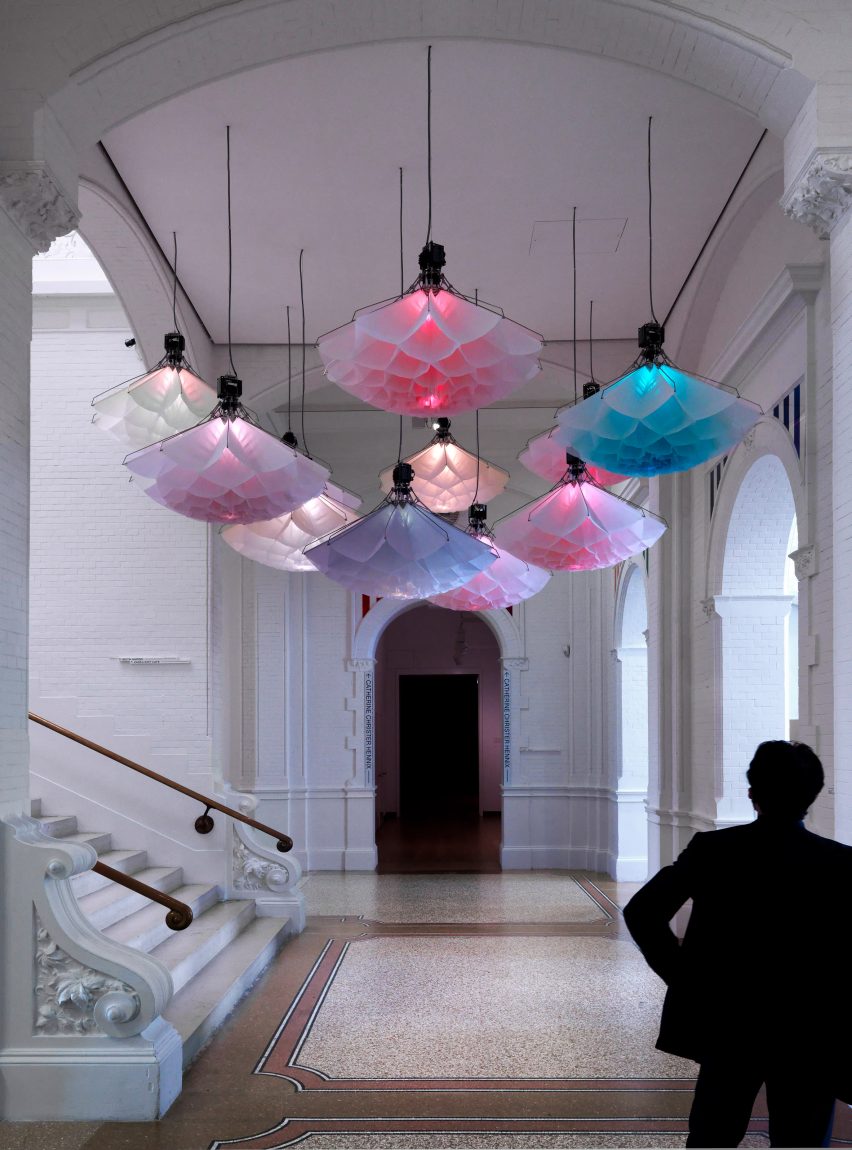
"We try to visualise realities that seem impossible, and to work with emerging technologies to help realise this dream," they said. "We'd like to be on the forefront of what will be possible in the future and make work that hopefully inspires a positive version of the future."
Studio Drift founders are "big dreamers"
The pair founded their Amsterdam studio in 2007, after graduating from Design Academy Eindhoven. Over the past decade they have produced a range of projects that all aim to explore the fluctuating relationships between nature, technology and man.
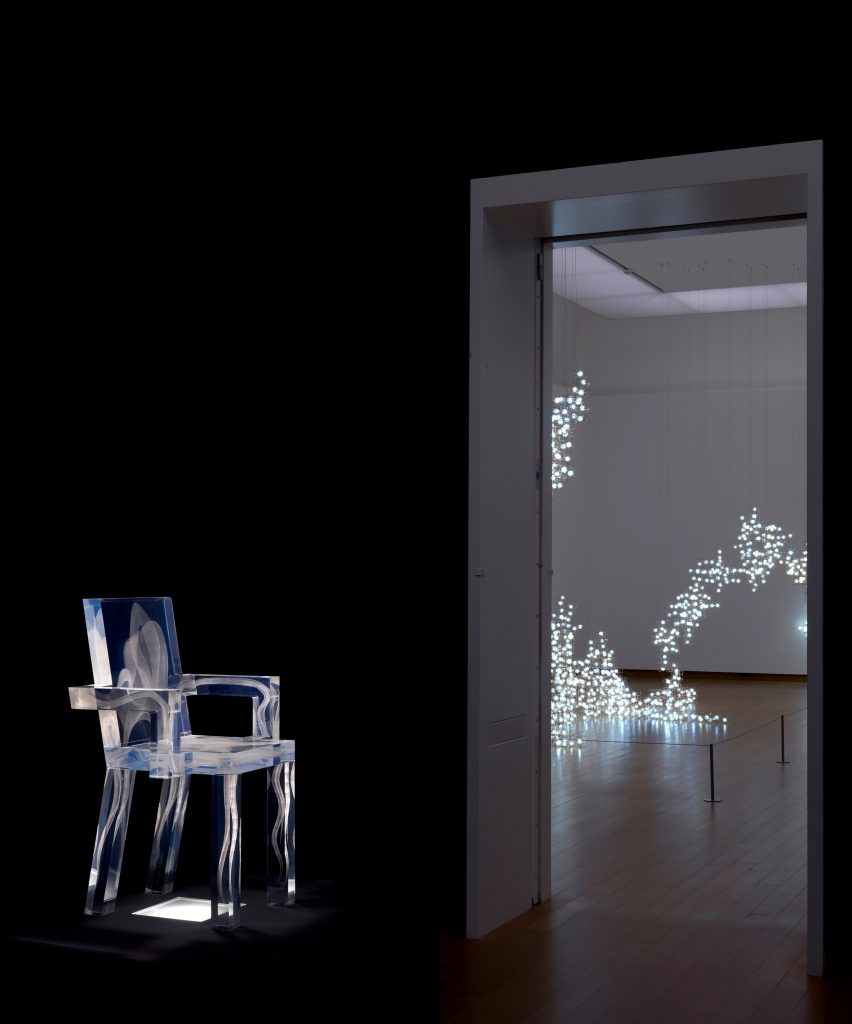
"We often start a project with the question: What if we could…?" they told Dezeen.
"We are big dreamers. Sometimes our ideas are far ahead and we have to stretch technical solutions, making the improbable possible, and this takes a long time."
For this exhibition, the pair are presenting a selection of their early works, along with several never-seen-before projects. In total, they are showing 16 immersive rooms, a series of films, plus a selection of art from the museum that has inspired their work.
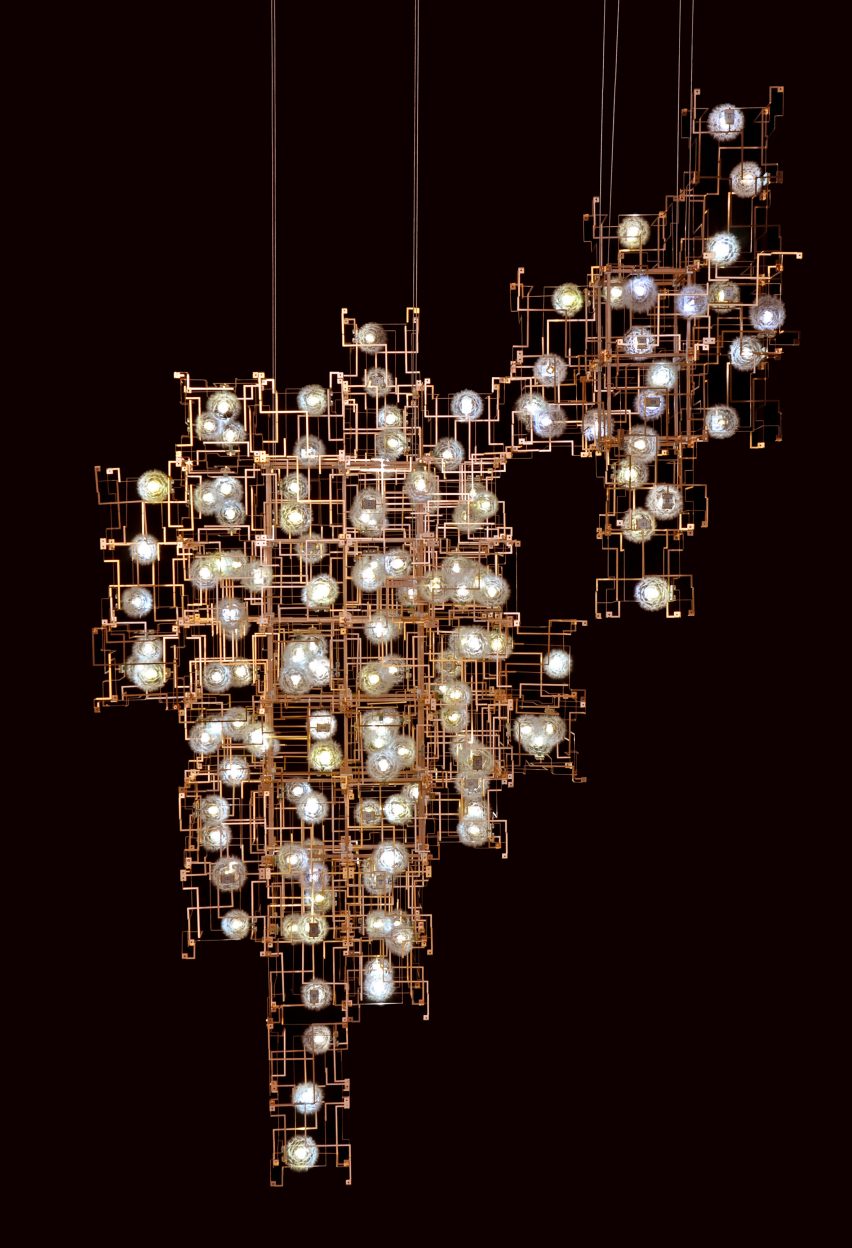
One of the most eye-catching works in the show is the largest-ever installation of Fragile Future, one of Studio Drift's best-known designs. Created especially for the exhibition, it comprises thousands of dandelions individually applied to LED lights and encased in metallic frames.
At the centre of this installation is Fragile Future Chandelier 3.5, one of the first large-scale versions of the design that the duo ever made. It was acquired by the Stedelijk in 2015.
The designers want people to dream the improbable
Other highlights include the imposing Drifter, which was a crowd favourite when first unveiled at The Armory Show in New York last year. It features a huge concrete block that is made to look like it is levitating.
Here, it is presented with a new movie shot in the Scottish Highlands by Dutch filmmaker Sil van der Woerd, about an entity in search of its origin and purpose.
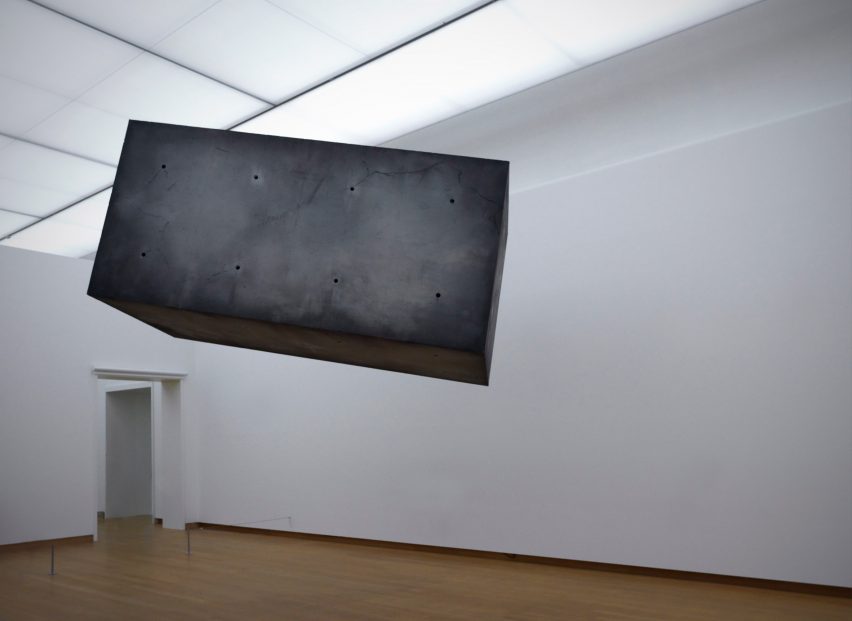
The name Drifter references Thomas Moore's novel Utopia, written in 1516, which imagined houses built from concrete before the material was in common use. It offers an insight into the scale of Studio Drift's ambition.
"With Drifter, we want to evoke a reaction to dream the improbable," they said. "Who knows, our next ideas might be the foundation for our new world."
One project explores human relationship with objects
New projects on show include Materialism, which looks at the components of numerous everyday objects, including a vacuum cleaner, a Volkswagen Beetle car, a water bottle, a pencil, and a plastic grocery bag. Each object is represented by a series of geometric blocks, revealing the exact quantities of materials used to make them.
The designers' aim is to give the public a greater understanding of the objects they engage with on a daily basis, and what goes into their production.
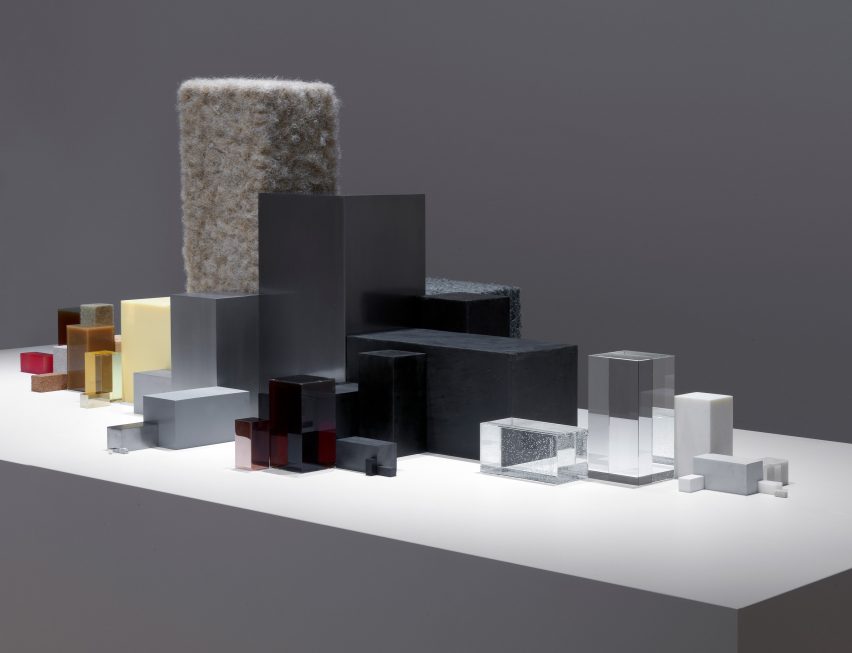
"With this new series, we want to confront – on a very elementary level – the things we surround ourselves with and the materials that comprise them," said Gordijn and Nauta. "The work calls for contemplation on how we deal with the raw materials at our disposal."
"People are not in touch with the world and its human, natural and technological inhabitants," they explained. "This gap creates the problems that we are facing today: climate change, wars, political instability, etcetera."
Studio Drift plans to start thinking bigger
Coded Nature continues at Stedelijk Museum Amsterdam until 26 August 2018. Curated by Ingeborg de Rode, the show's other exhibits include Tree of Ténéré, a responsive lighting installation first created for Burning Man festival, and Swarm, a project that saw drones programmed to move like a flock of birds.
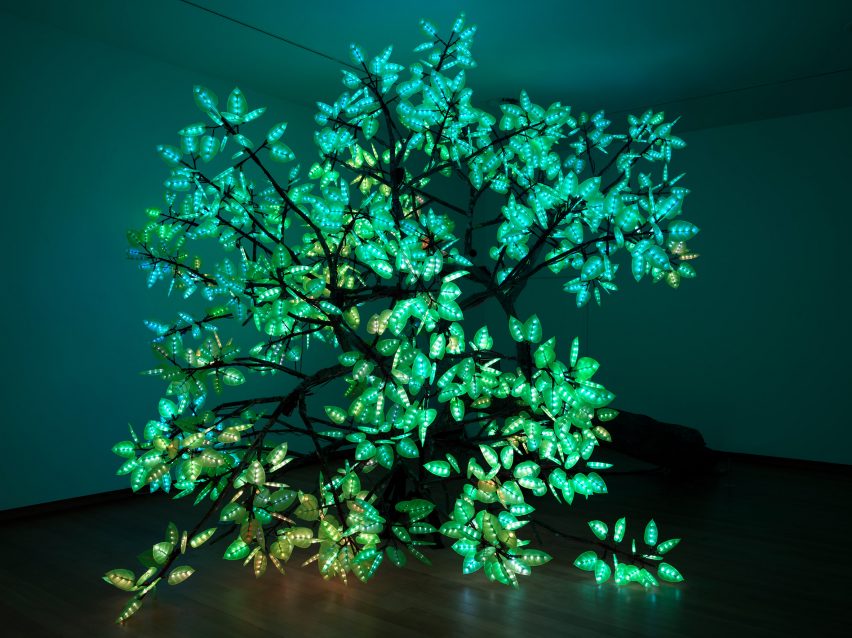
The future will see Studio Drift build on some of the themes explored in these projects. The designers said they want to start playing a more meaningful role in human-centred technological developments.
"We believe our generation should develop technology more on instinct and intuition rather than on physical possibilities. This is what will really help our future grow further into the right direction," they said.
"We are interested in moving environments and bringing this on a larger architectural scale," they added. "Hopefully the first project will be realised by the end of this year."